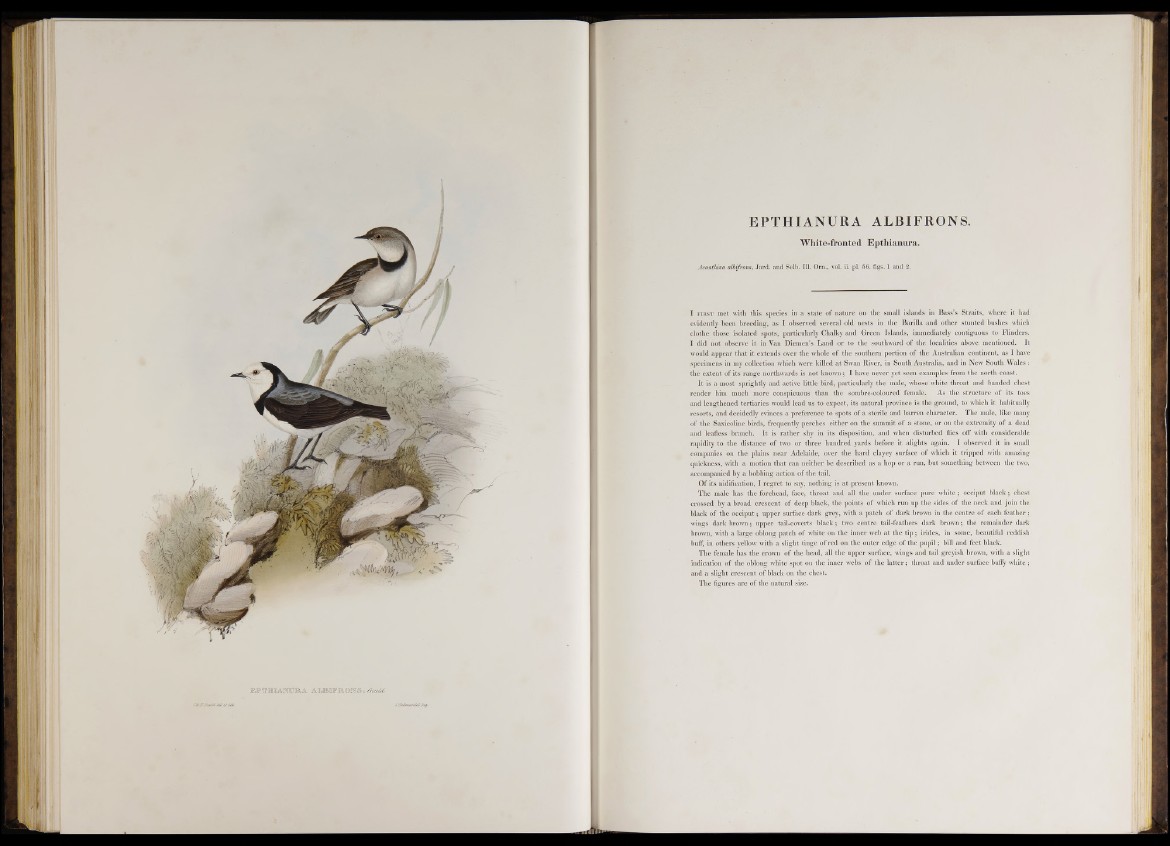
T E P T MITANIII im A. A IL IB IF IR .O K ’S « fso u M .
JAjB.fouZ&dd tXr&)Hu ' . ß/fiUiimvtiUiJitur.
EPTHIANURA ALBIFRONS.
White-fronted Epthianura.
Acantkiza albifrons, Jard. and Selb. 111. Om., vol. ii. pl. 56. figs. 1 and 2.
I f i r s t met with this species in a state of nature on the small islands in Bass’s Straits, where it had
evidently heen breeding, as I observed several old nests in the Barilla and other stunted bushes which
clothe those isolated spots, particularly Chalky and Green Islands, immediately contiguous to Flinders.
I did not observe it in Van Diemen’s Land or to the southward of the localities above mentioned. It
would appear that it extends over the whole o f the southern portion o f the Australian continent, as I have
specimens in my collection which were killed at Swan River, in South Australia, and in New South Wales :
the extent o f its ränge northwards is not known; I have never yet seen examples from the north coast.
It is a most sprightly and active little bird, particularly the male, whose white throat and banded chest
render him much more conspicuous than the sombre-coloured female. As the structure o f its toes
and lengthened tertiaries would lead us to expect, its natural province is the ground, to which it habitually
resorts, and decidedly evinces a preference to spots o f a sterile and barren character. The male, like many
o f the Saxicoline birds, frequently perches either on the summit of a stone, or on the extremity of a dead
and leafless branch. It is rather shy in its disposition, and when disturbed flies off with considerable
rapidity to the distance o f two or three hundred yards before it alights again. I observed it in small
companies on the plains near Adelaide, over the hard clayey surface o f which it tripped with amazing
quickness, with a motion that can neither be described as a hop or a run, but something between the two,
accompanied by a bobbing action of the tail.
Of its nidification, I regret to say, nothing is at present known.
The male has the forehead, face, throat and all the under surface pure white; occiput black; chest
crossed by a broad crescent of deep black, the points of which run up the sides o f the neck and join the
black of the occiput; upper surface dark grey, with a patch o f dark brown in the centre o f each feather ;
wings dark brown; upper tail-coverts black; two centre tail-feathers dark brown; the remainder dark
brown, with a large oblong patch of white on the inner web at the tip ; irides, in some, beautiful reddish
buff, in others yellow with a slight tinge of red on the outer edge o f the pupil; bill and feet black.
The female has the crown o f the head, all the upper surface, wings and tail greyish brown, with a slight
indication o f the oblong white spot on the inner webs of the latter; throat and under surface buffy white ;
and a slight crescent o f black on the chest.
The figures are o f the natural size.